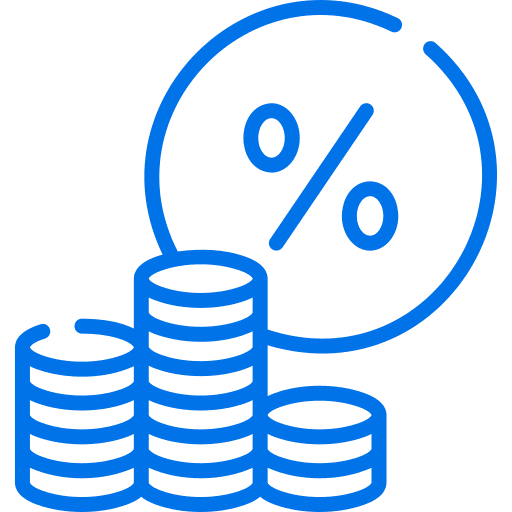The best savings accounts make budgeting feel like fun (ish)
Make your cash more interesting, with options that give you a high five.


We currently don't have that product, but here are others to consider:
How we picked theseThe Finder Score is a simple score out of 10. The higher a savings account's score, the better we think it is for the average customer.
We score each savings account in our database of hundreds based on a data-driven methodology with 2 main criteria: Does the account offer a high interest rate? And is it easy for savers to actually earn that rate?

The higher the interest rate, the more interest you'll earn and the more your balance will grow. This is the most important feature to consider when choosing your account.

Savings accounts shouldn't charge you any fees. If you're getting charged a fee, know that this is not common and there are plenty of fee-free accounts.

Savings accounts typically have monthly deposit requirements or spend conditions in order to earn the high bonus rate. Make sure you can meet these.
The best savings account for you will depend on your age, financial situation, savings goals and spending habits. Here are a few different hypothetical examples of how you might pick a savings account based on your personal savings style.
The best savings account for you will likely be one with the following:
Let's say you want to give your savings a boost for 3-5 months only to help you save for an overseas holiday or another large purchase. Because you're saving for a specific goal in the near future, you aren't planning to keep your cash in the account for too long and you don't want to have to meet any ongoing monthly conditions.
The best savings account for you will likely be one with the following:
Let's say you don't earn a regular income, or you're currently not in a position to meet a monthly deposit condition. Plus, perhaps you're also prone to dipping into your savings from time to time for impulse purchases or unexpected expenses.
The best savings account for you will likely be one with the following:
Did you know you can earn more than 4% p.a. with a term deposit? Here are a few accounts offering above 4% p.a. when you lock your savings for a fixed term length.

"Although shares historically offer better long-term returns, people often ask why keep cash in a savings account. The answer is simple: a savings account offers certainty, security, and acts as a financial safety net. Unlike volatile shares, you won't lose money, and you can quickly access your cash when needed."
Usually savings accounts are connected to transaction accounts and instead of the money sitting in your bank account, you can transfer it to your savings account and it'll earn interest (if you meet the account conditions, of course). The special thing about savings account interest is it's compound interest, meaning you'll earn interest on your interest.
Wondering which bank is best to open up your savings account with? Chances are you may be thinking of joining the Big Four. We've put together this pros and cons list of the Big Four VS smaller banks to help you make a decision easier.
| Pros | Cons | |
|---|---|---|
|
| |
|
|
In most cases you can apply and open the savings account online, as long as you're able to provide documentation that confirms your identity and residency. If you're a new customer to the bank, you'll need to verify your identity for legal reasons. For the online savings and bonus saver accounts, some banks will allow an Australian as young as 12 years old to have an account opened in their name.
Would you be better off with a high-interest option instead? I've crunched the numbers.
These savings accounts let you earn a decent ongoing interest rate on your cash with no annoying hoops to jump through.
Here's an up-to-date list of all savings account interest rate cuts so far, plus how it will affect your savings balance.
Kickstart your savings plan with a high interest savings account.
Encourage your children to save with a savings account.
If you need help getting your savings back on track, a bonus saver account with competitive interest may provide you with the incentive and features you need.
See some of the best savings accounts in Australia right now with high interest rates and no fees, plus tips to help you find the best savings account for you.
The ING Savings Maximiser is a high interest savings account with a competitive interest rate when you meet the account conditions. Here's how to earn the top bonus rate with this account.
Our range of simple calculators can help you plan your finances and compare potential interest earned.
How you can get your money back just for spending.